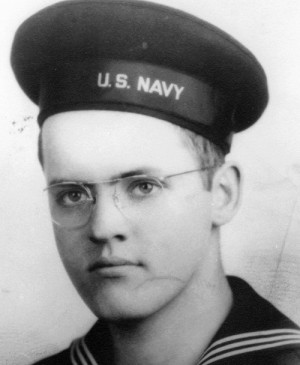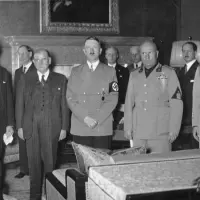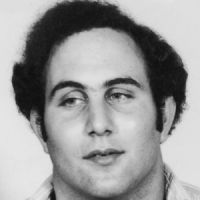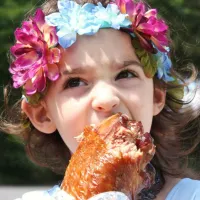 BLOGGING FROM A TO Z
BLOGGING FROM A TO Z
A 1970’s Time Capsule
NEWS AND NOTEWORTHY
Be sure to visit my Pop Culture post today as well.
Bloody Sunday

Victims of Bloody Sunday
Also known as the Bogside Massacre, Bloody Sunday occurred on January 30, 1972 in the Bogside area of Derry, Northern Ireland. 26 unarmed civilians were shot by British soldiers during a protest march against internment (imprisonment without trial which had been rampant in Northern Ireland since August 1971). Note: There are some graphic photographs that I could have used in this post but I chose not to.

Map of location of Bloody Sunday
Here are some general facts. For more reading, may I suggest the links I have posted at the end below.
- Thirteen people died during the massacre
- A fourteenth man died four months later due to his injuries sustained during the incident.
- Many of the victims were shot while fleeing from the soldiers

Bloody Sunday, Derry, Northern Ireland Jan 30, 1972. Source: Reddit.com
- Some were shot while trying to help the wounded.
- Other protesters were injured by rubber bullets (rubber coated projectiles used in riot control) or batons, and two were run down by army vehicles.
- The march had been organized by the Northern Ireland Civil Rights Association and the Northern Resistance Movement.
- The soldiers involved were members of the 1st Battalion, Parachute Regiment, also known as “1 Para”.
- There were two investigations held by the British government.
- The first investigation, held immediately in the aftermath of the massacre was the the Widgery Tribunal.
- The Widgery Tribunal largely cleared the soldiers and British authorities of blame.
- The Widgery Tribunal described the soldiers’ shooting as “bordering on the reckless”, but accepted their claims that they shot at gunmen and bomb-throwers.
- The report from the Widgery Tribunal was widely criticized as a “whitewash”.

The British set-up the Widgery Tribunal to investigate the events of that day. However, it was quickly seen as a farce when many of the facts and statements were either overlooked or omitted. Because of this, Derry people never accepted the Widgery Tribunal. Every year since 1972, the people of Derry have continued to march the same route as those who did on Bloody Sunday. Even to this day, the march is remembered with thousands in attendance.
- The second investigation, the Saville Inquiry, occurred many years afterwards.
- The Saville Inquiry, chaired by Lord Saville of Newdigate, was established in 1998 to reinvestigate the incident and took 12 years.
- Saville’s report was made public in 2010 and concluded that the killings were both “unjustified” and “unjustifiable”.
- Saville’s report found that all of those shot were unarmed, that none were posing a serious threat, that no bombs were thrown, and that soldiers “knowingly put forward false accounts” to justify their firing.
- On the publication of the report, British prime minister David Cameron made a formal apology on behalf of the United Kingdom.
- Following this, police began a murder investigation into the killings.
During a time in Northern Ireland labeled the Troubles, Bloody Sunday was one of this periods most significant events. Large numbers of civilian citizens were killed, by forces of the state, in full view of the public and the press. It was the highest number of people killed in a single shooting incident during the conflict. Bloody Sunday increased Catholic and Irish nationalist hostility towards the British Army and exacerbated the conflict. Support for the Provisional Irish Republican Army (IRA) rose and there was a surge of recruitment into the organization, especially locally.
If you wish to know more, there are full documentaries on Youtube and here are a few websites with articles on the subject:
https://en.wikipedia.org/wiki/Bloody_Sunday_%281972%29
http://www.bbc.co.uk/history/bloody_sunday
Today in Irish History, Bloody Sunday in Derry, 30 January 1972
 Check out my other blog
Check out my other blog I'M PUBLISHED
I'M PUBLISHED I'm Published Again
I'm Published Again









One of my favourite U2 songs is ‘Bloody Sunday’ but I never knew a complete history. Thank you for this informative post.
LikeLike
I was going to use that song but thought it was too 80s. Thanks for reading.
LikeLike
There’s no such thing as too ’80s. 🙂
LikeLike
I would agree in general but not when the 80s sound is not what I was after. 😜
LikeLike
Such an atrocity. I visited Derry in 1998 and was impressed by the large murals that memorialized the dead and advocated for justice.
LikeLike
This is so disturbing, and look at all the violence that happened later as a result! Such a sad, sad time.
LikeLike
Yes it seems no matter where, violence seems to be the go to action. It is very sad. Thanks for reading.
LikeLike
Tragic event.
LikeLike
This is so very tragic and so many people have no idea about this travesty. Many may know the U2 song but still have no clue why they wrote that song.
LikeLike
When I was selecting my B new event, I chose this one because I wanted to expand my point of view beyond what would have been news to an American. Thank for reading. It was a tragic event in world history.
LikeLike